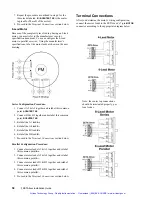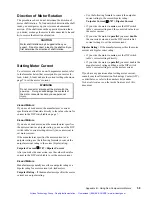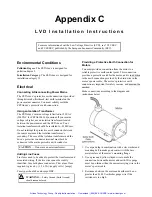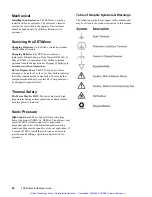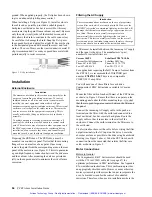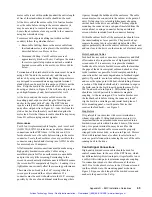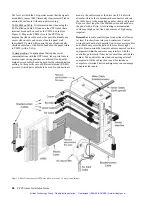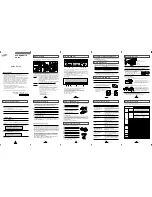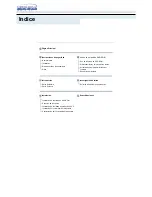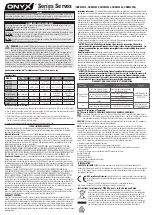
54
ζ
ZETA6xxx Installation Guide
a stop. In any of these cases, ringing causes error in rotor
position.
Ringing is a transient phenomenon (unlike resonance,
which occurs during steady state operations). It is a
response to a sudden change that we impose on the system,
such as “Accelerate to Velocity” or “Stop.”
Several problems are associated with ringing. It can cause
audible noise; the motor must have a margin of extra
torque to overcome the ringing; and longer settling times
can decrease throughput.
To eliminate these problems, system designers use
damping to force the ringing to decay quickly. Inertial
dampers have been used as components in passive
damping methods. Accelerometers, encoders, and
tachometers have been used as components in active
damping methods. These devices can have the unwanted
effect of limiting performance, adding complexity, and
increasing cost.
The ZETA6xxx has internal electronics that can damp
ringing transients, and cause them to decay quickly. No
external devices are necessary.
Damping in the ZETA6xxx
The ZETA6xxx has three different circuits that can damp
resonance and ringing.
Anti-Resonance – General-purpose damping circuit.
The ZETA6xxx ships from the factory with anti-
resonance enabled. No configuration is necessary.
Anti-resonance provides aggressive and effective
damping.
Active Damping – Extremely powerful damping circuit.
The ZETA6xxx ships from the factory with active
damping disabled. You must use the Active Damping
rotary switch to enable active damping and optimize it
for a specific motor size and load (see procedure on
page 36).
Electronic Viscosity – Provides passive damping at
lower speeds. The ZETA6xxx ships with electronic
viscosity disabled. You must use the
DELVIS
command to enable electronic viscosity, and optimize it
for a specific application (see procedure on pages 38-
39).
The first two damping circuits—anti-resonance and active
damping—work at speeds greater than three revolutions
per second (rps). Electronic viscosity works at speeds
from rest up to three rps. The ZETA6xxx will
automatically switch between the damping circuits, based
upon the motor’s speed. The next drawing shows the
effective range of each circuit.
Above 3 rps, the ZETA6xxx automatically enables either
anti-resonance or active damping—but not both at the
same time. They are mutually exclusive.
If active damping is set to zero (AD rotary switch), the
ZETA6xxx enables anti-resonance. If the Active Damping
rotary switch is set to any setting other than zero, the
ZETA6xxx enables active damping. This relationship is
shown in the next drawing—notice in the drawing that
anti-resonance can also be disabled with a DIP switch
setting (SW2-2).
Differences between anti-resonance and active damping
are described next; refer to the block diagram below.
Artisan Technology Group - Quality Instrumentation ... Guaranteed | (888) 88-SOURCE | www.artisantg.com



















